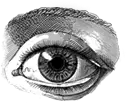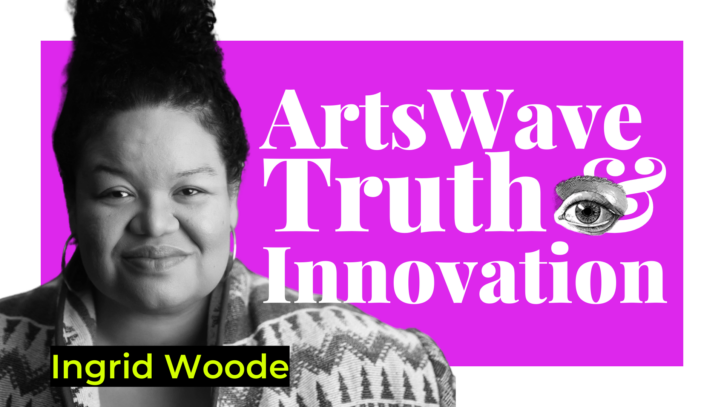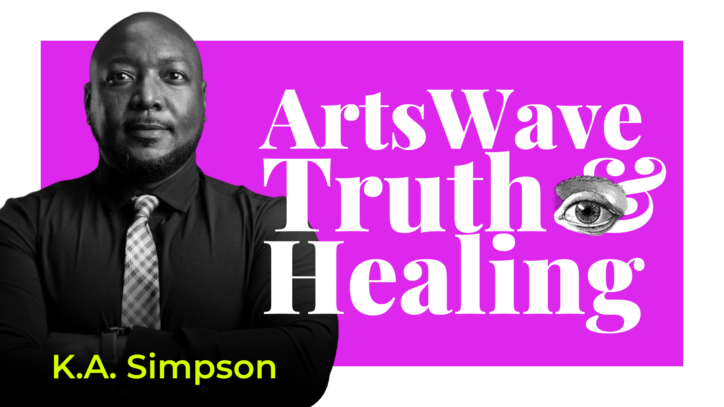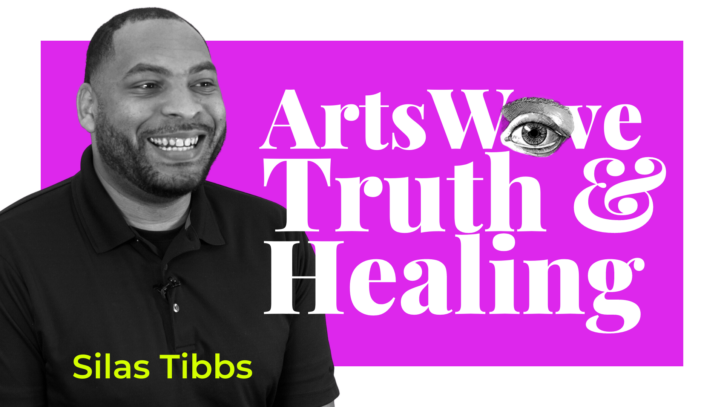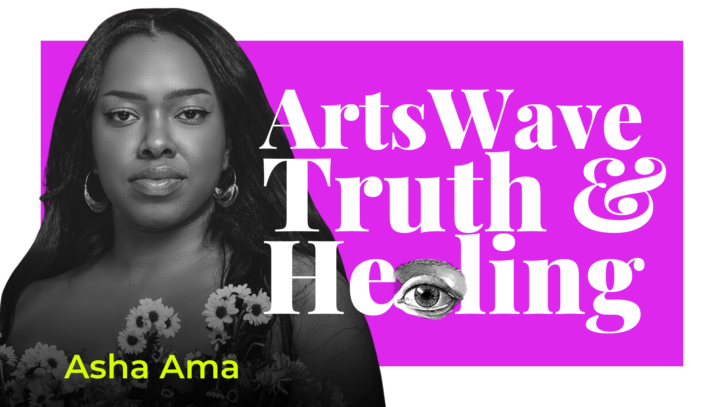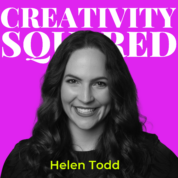
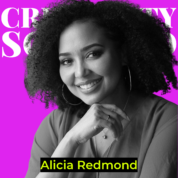
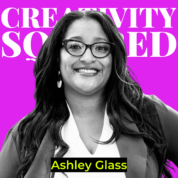

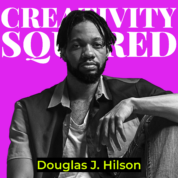


Ep58. ArtsWave “Truth & Innovation” Part 2: Alicia Redmond, Markus Cook, Ashley Glass, Ethan Avery, Asha the Artist & Doug Hilson
For the second year, Creativity Squared is proud to share a special series with the nation’s largest community arts campaign and our partner, ArtsWave. This year’s Truth & Innovation Artist Showcase centers around visual art, film, dance, and music by 22 of the region’s leading Black and Brown artists.
You can still see some of the works:
- This year’s “Visual Arts Exhibition” is open through August 8 at the Clifton Cultural Arts Center.
- The “Be Still” city-wide augmented reality portrait exhibition is available to experience through September 22.
- As the Resident Playwright, Derek Snow will debut his play, ‘The Ravenside Occurrence,’ this September at Playhouse in the Park: https://www.cincyplay.com/tickets/Arts-Culture-Incubator.
Last year, eighteen of the Cincinnati area’s artists of color showcased their multidisciplinary works exploring the concepts of healing, rebirth, and reconnecting in the Truth & Healing ArtsWave showcase. Creativity Squared sat down with the 2023 artists to discuss their individual works for the series.
The intention of these interviews was, and is again this year, to give these artists another platform to share their art and the truth expressed through it, as you never know what ripples will turn into waves.
Creativity Squared is proud to share the second part of this special three-part series with our partner ArtsWave highlighting the phenomenal artists and grant recipients selected for this year’s ArtsWave Black and Brown Artist Program!
Today’s podcast focuses on the vision of five film artists for the world they want to live in and is expressed through their art. You’ll hear about:
- Alicia Redmond — film: “Rooted in Love: The Recultivation of Lincoln Heights – A Historic Black Community”
- Markus Cook — film: “The Coming Sleep”
- Ashley Glass — film: “Breaking the Silence: The Black Nursing Documentary”
- Ethan Avery — film: “Shot Clock”
- Asha the Artist — film: “Bodies in Flux: Exposing Reproductive Choice Through Art and Words”
- Doug Hilson — film: “Strokes”
They all talk about their individual projects and how it fits into this year’s theme: Truth & Innovation. The video interviews are also available on this YouTube Playlist. Check out Part 1 with the visual artists and Part 3 with the live performance artists.
Who Is ArtsWave?
ArtsWave is a nationally recognized non-profit that supports over 150 arts organizations, projects, and independent artists. Because it’s important to support artists, 10% of all revenue generated from Creativity Squared goes to ArtsWave to support their Black and Brown Artists Program. The mission of Creativity Squared is to envision a world where artists not only coexist with A.I., but thrive.
The Black and Brown Artists Program supports independent artists of color in the greater Cincinnati area with direct grants of $10,000 each, as well as opportunities for mentorship, business skills training, and networking. Funded artists were selected by a panel based on how their proposal addressed this year’s showcase theme: “Truth & Innovation.”
And in case you missed it (or want to revisit it), listen to Episode 9 of Creativity Squared featuring Janice Liebenberg who served as the Vice President of Equitable Arts Advancement at ArtsWave to hear her talk about how the arts can bring people together and for more on ArtsWave.

Truth & Innovation Showcase
The ArtsWave Black and Brown Artist Program Showcase, now in its fourth year, supports local BIPOC artists and their interpretations of contemporary themes.
Artists present their works across multiple genres, exploring the modern BIPOC experience and the concepts of “Truth” and “Innovation.” Community collaboration is a key component of these projects, promoting a more equitable future for Cincinnati.
The showcase includes visual art, music, film, theater, dance, and more, representing the diverse experiences of underrepresented groups in modern America. For more details and event schedules, visit artswave.org/truth.
“Rooted in Love: The Recultivation of Lincoln Heights – A Historic Black Community” by Alicia Redmond
“And I just said to myself, ‘Well maybe this is the story that should be told. This is the story that wants to be told.’ Even though this is my first documentary, I do think that sometimes there is a story that wants to be told. And to me, that is exactly what happened.”
– Alicia Redmond

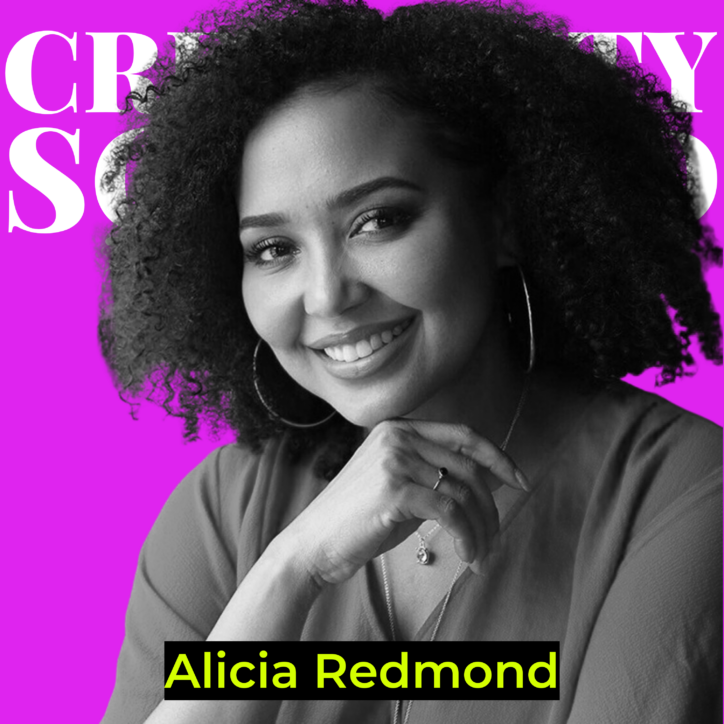
“Rooted in Love: The Recultivation of Lincoln Heights – A Historic Black Community” is a short film that documents the first self-governing African American community north of the Mason-Dixon Line. Through a captivating exploration using archival photos, film footage from bygone eras and contemporary recordings, this documentary aims to illuminate the remarkable journey of the Lincoln Heights community. The film will include interviews with current residents and city officials, and will delve into the challenges, uncertainties and truths that shape the daily lives of inhabitants.
Meet Alicia Redmond, whose lifelong passion for the arts, cultivated through her talent as an actress and dancer, evolved into a love for storytelling on both stage and screen. From early exposure to plays and musicals, she transitioned seamlessly from the stage to film, igniting a desire to not only perform but to write and direct.
“The Coming Sleep” by Markus Cook
“It is a universal truth that we all die one day. How do you even prepare for that? And then, specifically, for this Black woman who is at the top of her scientific field, who is brilliant — she’s never had to grapple with something that she doesn’t think she can conquer or fix or figure out. And so, I think it’s a very human story at a base level.”
– Markus Cook

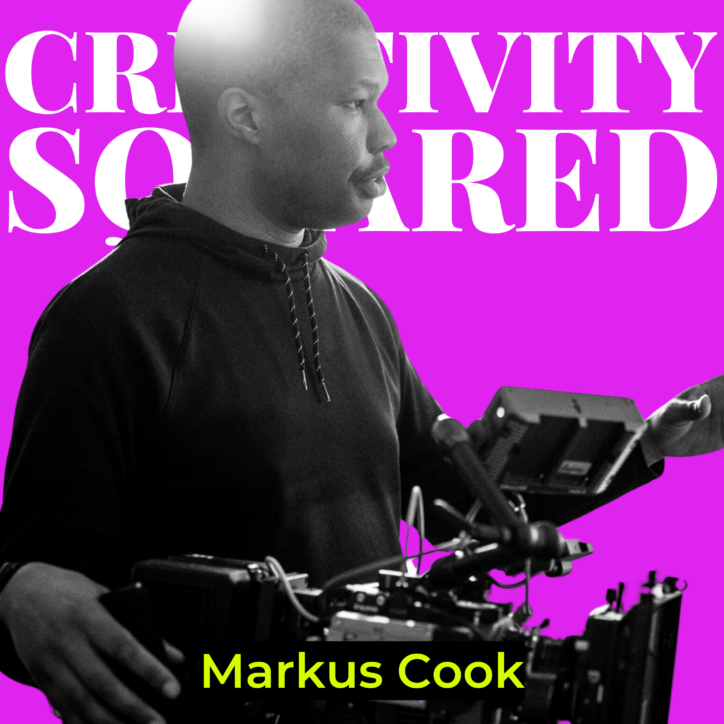
“The Coming Sleep” is a 90-minute feature film about a Black scientist and professor seeking funding to build a machine that will separate her body from her soul. Secretly, she hopes the process will reunite her with her late husband and mother. The film explores grief, trauma and our desire to explain the unexplainable. It will be shot in downtown Cincinnati, Northside, and Newport, KY.
Meet Markus Cook, a multi-hyphenate artist with a strong focus in film and motion design. He has
written/directed three feature-length films, two of which have won multiple awards, and directed over
seven short films in his career thus far. He has shot and directed numerous clients in his freelance career,
including Wilson Sports, Procter & Gamble, Frost Brown & Todd, and many others both regional and
national. Markus grew up in the Greater Cincinnati community, and graduated from Asbury University with a degree in Media Communications. He has been inspired by great artists like Hayao Miyazaki, Tim
Burton, and others in the art-form of film and cinematography. His biggest aspiration is to offer amazing
experiences and stories to audiences through his films and the films he helps craft from other local and
national filmmakers. In addition to his freelance work, he also works at the Art Academy of Cincinnati as
their Video Producer.
“Breaking the Silence: The Black Nursing Documentary” by Ashley Glass
“When you’re interacting with nurses, and they may be a minority, just know the struggles that they had to go to get there. Know that they are adequately trained and they are just as competent as any other nurse, and they truly want to help and support you and your family members.”
– Ashley Glass


The Black Nursing Documentary seeks to illuminate the invaluable contributions, resilience and stories of Black nurses. Through powerful narratives, interviews and historical context, the film documentary will showcase the often overlooked but pivotal role Black nurses have played in shaping healthcare, confronting adversity and fostering inclusivity within the nursing profession.
Meet Ashley Glass, a Documentary Director known for her unwavering commitment to shedding light on health disparities and advocating for health equity through powerful storytelling. With a career spanning over a decade, Ashley’s passion for social justice led her to produce and direct compelling documentaries that challenge systemic barriers and advocate for equal access to healthcare worldwide.
Her empowering works have earned widespread recognition for their authentic narratives, prompting discussions, and driving impactful change in the pursuit of a fair and just healthcare system for all.
“Shot Clock” by Ethan Avery
“The piece was mostly inspired from the kind of stories I collected over the years from people I’ve known and also my own personal experience being a Division I athlete.”
– Ethan Avery

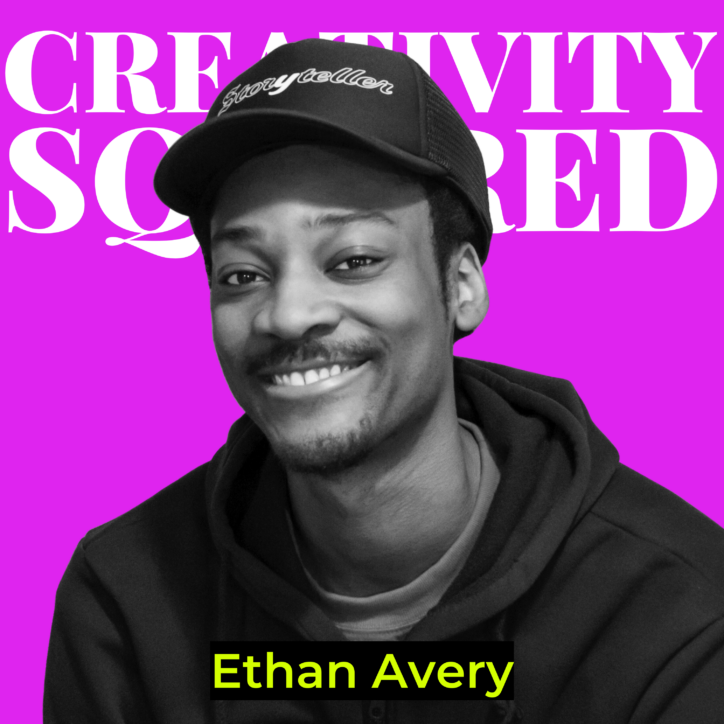
“Shot Clock” is a short film following a star college athlete as he struggles between becoming a pillar for social change and focusing on his future career as a professional athlete. Written and directed by Avery, the film will tell this story through local talent, including actors, filmmakers, musicians, singers, poets, painters and more. “Shot Clock” explores how people can use their platform to influence positive change, specifically dealing with the relations of community and law enforcement.
Meet Ethan Avery, a Cincinnati-based writer-director. He is known for writing and directing work that highlights social or societal issues, often with a fantastical flair. This includes the multi-nominated short film, The Mayor Jones and the critically-acclaimed #1 Bestselling Sword and Sorcery series.
“Bodies in Flux: Exposing Reproductive Choice Through Art and Words” by Asha the Artist
“My truth is that everybody should have autonomy over their bodies and choice on their reproductive health, simple as that. You don’t have to agree with it, but you should definitely advocate in this country of America where we are supposed to have freedoms and liberties, everybody should have the freedom and liberty to decide what kind of life they want to live.”
– Asha the Artist

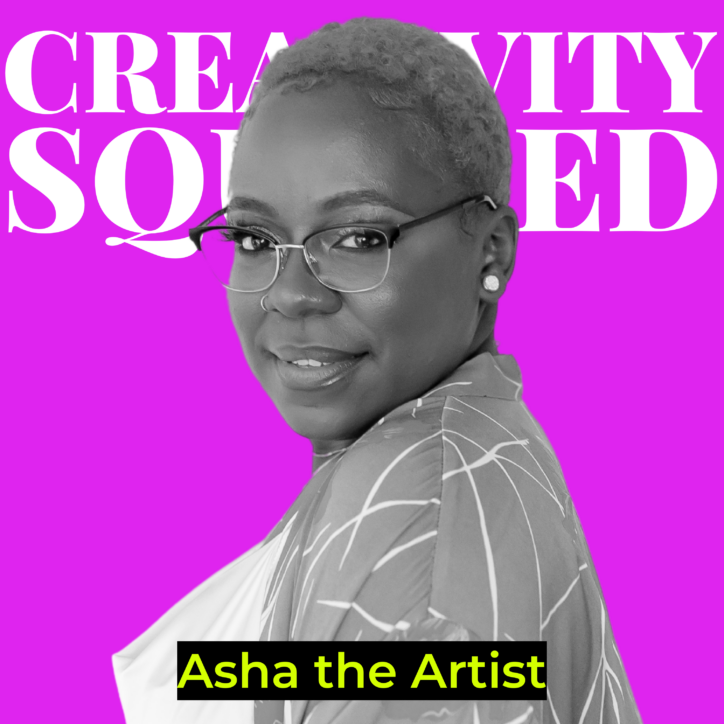
“Bodies in Flux” is an exhibition of mixed media sculptures accompanied by poems or short stories nurturing communal empathy for women and nonbinary people’s reproductive rights. This project harnesses the innovative spirit of Fluxus artists to challenge conventional notions of art’s role in connecting people, inspired by the overturning of Roe v. Wade in the summer of 2022.
Meet Asha the Artist, an artist, entrepreneur, and arts educator. Asha’s work centers their personal identity as a queer African American woman, exploring social justice themes such as race, sexuality, women’s rights, and mental health. Her primary medium is oil on canvas; however, she enjoys working in a variety of disciplines allowing the message to dictate the creative form. With her work, Asha strives to unite diverse populations through shared experiences and common narratives to facilitate understanding and promote change. Asha does this by connecting with the communities in which she works, giving voice to marginalized people by positioning their voices so that they may be heard by non-minority audiences.
“Strokes” by Doug Hilson
“For parents watching the film that might have a child interested in creative arts, try to be careful of the voice you use when you approach them. You don’t want to necessarily say anything that snuffs out their passion — it can be a slippery slope.”
– Doug Hilson

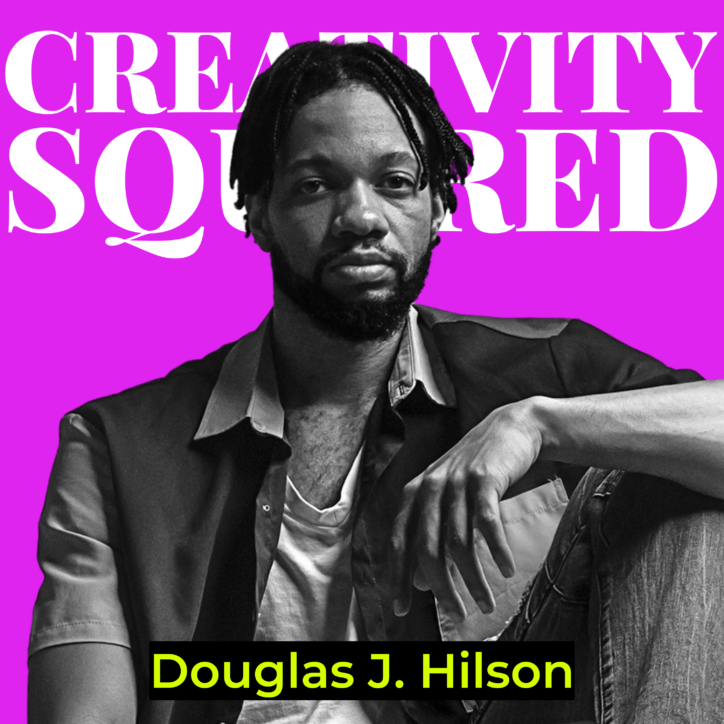
“Strokes” is a 75-minute film about encouraging the young to pursue their passions in art. Featuring the work of Cincinnati artists, the film will highlight the uniqueness of Cincinnati’s arts through a cultural lens, conveying how past art and contemporary art are connected to truth.
Meet Doug Hilson, who has been exploring the creative arts for the last five years of their adult life. Prior to, Doug’s sole passion rested squarely on his pen as a creative writer and poet. As a grade school student, one of Doug’s poems had been selected to send to then president, Barack Obama during his inaugural year. Since then his purpose has been to capture and express life through a different lens primarily through narratives. Doug currently
works professionally as a Cinematographer and Photographer. Using his past experience as a writer, poet, comedian, and now as an award-winning Director/Producer, he has been able to tell stories visually that her would have once considered impossible.
Support Artists and Stay Tuned for More
If you’re interested in working with, featuring, or supporting these artists, please don’t be shy about it.
The next episode in this series spotlights the performance artists of the showcase in Part 3. Don’t miss Part 1 with the visual artists too.
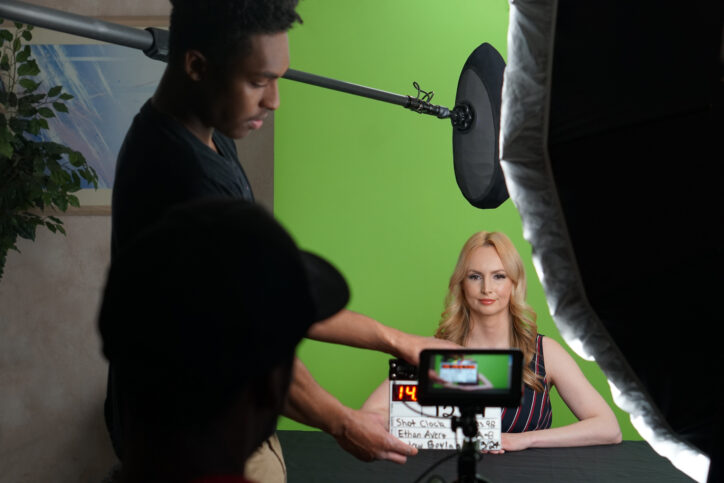
Continue the Conversation
Thank you to all of the artists for being our guest on Creativity Squared. Visit artswave.org/truth to learn more about this year’s artists and showcase.
This show is produced and made possible by the team at PLAY Audio Agency: https://playaudioagency.com.
Creativity Squared is brought to you by Sociality Squared, a social media agency who understands the magic of bringing people together around what they value and love: https://socialitysquared.com.
Because it’s important to support artists, 10% of all revenue Creativity Squared generates will go to ArtsWave, a nationally recognized non-profit that supports over 150 arts organizations, projects, and independent artists.
Join Creativity Squared’s free weekly newsletter and become a premium supporter here.
TRANSCRIPT
[00:00:00] Alicia: The theme for this year’s Arts Wave Showcase was truth and innovation, which is very important to me. If you don’t address the truth of an issue, if you don’t get to the root of it, to the truth of it, you, you know, you can’t find the real solutions that are needed and out of those solutions should be innovation.
[00:00:29] Helen: Welcome to Creativity Squared. Discover how creatives are collaborating with artificial intelligence in your inbox on YouTube and on your preferred podcast platform. Hi, I’m Helen Todd, your host, and I’m so excited to have you join the weekly conversations I’m having with amazing pioneers in the space. The intention of these conversations is to ignite our collective imagination at the intersection of AI and creativity to envision a world where artists thrive.
[00:01:03] Helen: For the second year in a row, Creativity Squared is proud to partner with ArtsWave to amplify the phenomenal artists and grant recipients selected for this year’s ArtsWave Black and Brown Artist Program. Today, enjoy part two of a three part special series of interviews with the artists featured in the program’s Truth and Innovation Artist Showcase.
[00:01:28] Helen: You’ll hear about their work, the world they want to live in, And their truth expressed through their art.
[00:00:00] Alicia: Hello, my name is Alicia Redman.
[00:01:36] Markus: My name is Markus Cooke.
[00:01:38] Ashley: I am Ashley Glass.
[00:01:39] Ethan: I’m Ethan Avery.
[00:01:41] Asha: My name is Asha White.
[00:01:42] Doug: My name is Doug Hilson.
[00:01:44] Helen: The showcase’s “Visual Arts Exhibition” is open through August 8th at the Clifton Cultural Arts Center.
[00:01:51] Helen: The “Be Still” city-wide augmented reality portrait exhibition is available to experience through September 22nd. For more information and the full video versions of these conversations, visit CreativitySquared.com. From episode 9 on the show, Janice Liebenberg, who served as the Vice President of Equitable Arts Advancement at ArtsWave, shared:
[00:02:16] Janice: And so a blueprint for collective action includes that the arts bridge cultural divides. And that is, you know, so key for us as we invest in the arts and how we schedule our programming and how we just feel that the arts can bring people together. No matter what divides us outside of the arts can bring us together.
[00:02:41] Helen: Creativity Squared is a proud partner of ArtsWave. And because it’s important to support artists, 10 percent of all revenue Creativity Squared generates goes to ArtsWave, which is a nationally recognized non-profit that supports over 150 arts organizations, projects, and independent artists. This year’s theme is truth and innovation, and I had the great honor of interviewing the artists on what the theme means to them.
[00:03:10] Helen: I’m inspired, humbled, and grateful to share their stories with you. The intention of these interviews is to give these talented artists another platform to share their art and the truth expressed through it, as you never know what ripples will turn into waves. If you’re interested in working with, featuring or supporting these artists, please don’t be shy about it.
[00:03:35] Helen: With that, here are the vignettes of our conversations. Enjoy.
[00:03:43] Alicia: Hello. My name is Alicia Redmond. I’m a writer, director, producer, actor. I am located in Cincinnati, Ohio, and I am proud to be an ArtsWave Black and Brown artist grant recipient. My project is a short documentary called “Rooted in Love: The Recultivation of Lincoln Heights, a Historic Black Community.” And it’s a short documentary about the city of Lincoln Heights here in Ohio.
[00:04:14] Alicia: Lincoln Heights was the first African American incorporated city above the Mason Dixon line, here in Ohio. And so it has a beautiful, rich history, but also a tragic one. And so the film documents a little bit about that history, but then it goes into the Heights Movement and a man named Daronce Daniels, whose great grandfather was one of the founding families of Lincoln Heights.
[00:04:44] Alicia: So, a friend of mine was telling me about Lincoln Heights. I am a transplant here by way of Atlanta, and as he was telling me about what happened to this town, I was just fascinated. It was affected by redlining, which is rooted in racism, a practice that really kind of tore the land apart that they were given at first, but then was taken from them.
[00:05:11] Alicia: And so, the film is also about rebuilding that community. That’s the main thing of it too. So, but that’s how I found an interest in doing this project. I was just fascinated with what happened to the city. I don’t think that I have ever lived close to a city that something like this had happened to. I was just taken with the story and I was like, “why aren’t we hearing about this more?”
[00:05:35] Alicia: The story came about through Stephen Easley. I think he was actually the one who first shared the story of Lincoln Heights with me because he’s involved and he’s a partner with the Heights Movement, the movement that Daronce Daniels is a co-director of. He is the one who introduced me to Daronce and he told me about the Heights Movement.
[00:05:59] Alicia: So the Heights Movement is an organization that is, I believe, founded to bring Lincoln Heights, I don’t want to say back to its former glory, but what it could be today. You know, it has not recovered from the redlining that took place. And so Daronce Daniels is a fifth generation resident of Lincoln Heights.
[00:06:24] Alicia: And personally, I have never met a fifth generation resident of any place. And so, even that blew my mind. Like your family has lived here in this place for five generations. And so he became the focus of the story when my plan to tell the story just went totally south. Everyone that I had, that I wanted to interview to simply share the story of Lincoln Heights just kind of canceled on me.
[00:06:58] Alicia: And all of the heights movement people were available. And I just said to myself, well, maybe this is the story that should be told. This is the story that, that wants to be told, you know, sometimes there is a story that wants to be told. And to me, that is exactly what happened. and I’m grateful for that because I think the, you know, the movement and what they’re doing in the community
[00:07:30] Alicia: is so important. The cause of what they’re trying to do is so important. So really, I was honored to share not just the story of the Heights Movement, but Daronce’s story, you know, just a little bit of his story. And again, you know, it’s only a 20 minute documentary and there’s so much to tell. This being my first documentary, I’m kind of learning, like, what pathway should I take with this?
[00:07:58] Alicia: I do think that, you know, festivals would be a great way to, you know, share the story and get this, get the film out there. but also I’d like to somehow get it broadcast maybe on like a PBS or, you know, just a station that is local since it’s such a great local story. But of course I wouldn’t limit it to that either, because I think it’s a story like a Rosewood like a Tulsa that deserves national attention because they are still here. They’re still here. So I think, you know, that’s important too. I’m open to the avenues of sharing it. I hope that viewers would walk away with the knowledge of this history, especially Ohioans, Cincinnatians, with the knowledge of this piece of history, again, that is still here in their city on a broader scale, just to bring attention to this story and think about what can I do, even if it’s a corporation, what can a corporation do to help cities like this, stepping up to the challenge, stepping up to the plate of how can I help this city that was torn apart like this?
[00:09:27] Alicia: The Heights Movement is fostering the idea of let’s reclaim this ourselves. Let’s rebuild ourselves. Let’s do what we can to make this what it once was and better. And I admire that. I admire that so much. One of their projects that they have is called the Jackson Street Farm. And, you know, that’s kind of where we meet Daronce, our hero here, on the farm that he started, that the Heights Movement started.
[00:10:00] Alicia: And when I think of them, I really do think of something, you know, sprouting upward and growing. They’re doing it and they’re doing it themselves and they’re creating this playbook to help other cities like them. The theme for this year’s ArtsWave Showcase was Truth and Innovation, which is very important to me. If you don’t address the truth of an issue, if you don’t get to the root of it, to the truth of it, you know, you can’t find the real solutions that are needed.
[00:10:32] Alicia: And out of those solutions should be innovation. When you can address the truth of something, then I believe the innovation, you know, happens through brainstorming, through community, through coming together with ideas, which is something that the Heights Movement does. It was such a powerful theme this year that I really wanted to, submit this story. My truth that I express through Rooted in Love, I believe is rooted in justice, actually. I like to see justice. I like to see, not necessarily punishment, the right side of justice winning. If something is wronged, how can we make it right? And so that’s part of my truth.
[00:11:28] Alicia: That’s part of who I am. If you can remember one thing from this conversation, I would say that there is strength in unity, there is strength in community, there is strength in partnership, even if it’s just one other person who agrees with what you’re doing and wants to help you, there is strength in that.
[00:11:55] Alicia: I would say be open to it. No man is an island unto himself. There’s power in that.
[00:12:06] Markus: My name is Markus Cooke. I am a filmmaker based out of Cincinnati, Ohio. I work in a small production company called Montserrat. I had the privilege this year to work with the 2024 Black and Brown Artist Grant on a film called “The Coming Sleep.” We are currently in post-production on that film and it’s going to be going to festivals next year.
[00:12:26] Markus: The Coming Sleep is a film about a neurobiologist who is presenting an experiment to prove whether or not the soul really exists. And if it does exist, can we monitor and visualize it in our, physical world? And so it’s a high concept film on the surface, but it’s really about her journey and personal story of loss and coming to an understanding of something that we all deal with eventually, which is death, it can seem kind of like a grim story on the surface, but I think it’s really an exploration of what it takes to really like reckon with acceptance of something that we can’t necessarily stop.
[00:13:09] Markus: And I think one of the unique reasons that it was so crucial to partner with The Black and Brown Artists Grant on making this film is because like I was saying earlier, the, truth and innovation concept is this is a truth that is universal. As morbid as it sounds, it’s a universal truth that we all die one day.
[00:13:29] Markus: How do you even prepare for that? And then specifically for this black woman who is at the top of her scientific field, who is brilliant, she’s never had to grapple with something that she doesn’t think she can conquer or fix or figure out. And so I think it’s a very human story at a base level.
[00:13:49] Markus: I think it comes in really heavy on the science end, but, I think that it’s something that a lot of people can find themselves in. The film that everyone at The Black and Brown Artist Showcase got to see this past weekend and that you may have been able to see online or, however, that is a five minute preview of the feature length film.
[00:14:11] Markus: We actually have, you know, a full length film coming out next year that’s going to be sent primarily to festivals as a feature film. So, right now what we’re sharing is a quick preview to just kind of give people an idea of where the story takes them. This is my fifth feature film. I usually don’t work in, you know, the heavy drama side of stuff.
[00:14:35] Markus: I usually do, you know, thrillers or action, action-dramas and things like that. So there’s usually something else tacked on. This was strictly a drama story. Something that I felt was like, so focused on the human condition and the experience that a lot of us grapple with, you know, our losses, again, a universal experience.
[00:14:59] Markus: We’ve just happened to wrap that in a story that’s got a lot of other elements to it. So, The Coming Sleep has been a story in my mind for a few years. I tend to write a lot of my story ideas out and then just kind of store them away until I feel that the conditions are right for that story to come to life.
[00:15:22] Markus: And when I heard about the grant, I was like, you know what, this might be a great opportunity for this specific story. I felt like the two had perfect synergy. So it was a great opportunity for, me as a filmmaker, but it was a great opportunity for that story to swim to the surface. I think a lot of times we try to force things into being, and it might not be the right time or the right opportunity or elements.
[00:15:48] Markus: And so for this story, I felt like, Hey, you know, this is a good moment. This is a good organization to partner with. And so, you know, I’m just really thankful that they selected me. The name, The Coming Sleep came about, and this is, I don’t know anyone else who does this. I still haven’t figured out a way around it.
[00:16:05] Markus: I tend to write names of stories first, and then the ideas and the images follow behind. So, The Coming Sleep, can’t really tell you where that came from. But when I started to think about it, to me, that was, you know, the concept of death. And so then I started to think of, you know, someone who was trying to cheat death essentially.
[00:16:29] Markus: And I started to do a little bit of research about, you know, scientists and what they believe or disbelieve about the soul. And I was like, that’s such an interesting concept of a scientist being forced to reckon with their loved ones who are dying. And what might they do to, circumvent that if they, if that was even possible. So our, scientist, Naomi, in the story, she, I guess, cheat death, isn’t the perfect way of describing it.
[00:16:57] Markus: Her hope is to prove that if the soul exists, maybe there’s hope that some of the other ideas we have around the soul are true. If I can prove that when people die here, they still exist somewhere. Then there’s a chance I could be reunited with my loved ones at some point in time, somehow. And so she’s trying to prove that they don’t just stop existing.
[00:17:21] Markus: And, with her experiment, she is looking to separate the soul from a physical body for a moment so that they can observe it free from the body to prove that the concept of a soul, you actually exist when your body fails. The concept of truth and innovation and how that’s presented in The Coming Sleep, again, is kind of this idea that all of us, no matter what your religious views are, no matter what your general worldview is comprised of, I think a lot of us would like to hope that there’s something after death and this story is about this character, this scientist reckoning with the truth of death and also trying to discover that truth of is there life after death? Personally, I believe that there is life after death and I do believe that we do have the chance to be reunited with our loved ones, and I think this film was a kind of cathartic way for me to you know express my own grief, but also for me to provide a window for others to view their own grief through and hopefully experience some kind of closure. Making films is a huge joy for me, but I got to work with a lot of talent and a lot of people who even on set, you know, everyone was impacted by the story and what we were trying to do.
[00:18:46] Markus: And I think there was just so much like mutual understanding of the experience. And that really drove home just how human the experience is. And again, kind of that whole, desire to create catharsis for people. I think that was just, as a filmmaker and a creative, there’s a lot of insecurity sometimes about whether or not you’re telling a story that’s worth anything, or something that people are going to connect with.
[00:19:09] Markus: And I just was constantly reminded, even now in post-production, this is something that people are connecting with on an emotional level and that’s. That’s a huge thing for me.
[00:19:24] Ashley: I am Ashley Glass. I am a registered nurse and also work in public health as well. I have a strong focus on mental and behavioral health as well as health equity. Also, I consider myself a creative because I like to translate kind of the disparities that we’re seeing in the healthcare space onto the screen.
[00:19:43] Ashley: So I love documentaries. I love being able to listen to stories and do storytelling of underserved populations. I live in Fairfield, Ohio, and, I am a Black and Brown Artist Recipient of the ArtsWave grant this year. So, very excited. ArtsWave has been very supportive. I love documentaries because I love hearing authentic stories.
[00:20:09] Ashley: I love hearing how people have come to where they are today, some barriers that they’ve overcome. Or just some ways that we can truly improve as a society. I love just the realness of documentaries. So that’s what made me fall in love with documentaries. This is my third documentary. I will say that. My first documentary was on imposter syndrome and black women.
[00:20:32] Ashley: We also did a documentary on the importance of black fathers, in the black community, cause a lot of times they are not shown in a positive light. So we wanted to give voice and space to that. And so this is our third one. I recently graduated from nursing school and found a lot of challenges and barriers and inequities in the academic space and wanted to be able to showcase that on a more wide audience because a lot of nurses know this, but it’s kind of quietly kept into the nursing profession and wanted a wider audience to see so that we can get allies and advocacy to make changes in the healthcare space.
[00:21:08] Ashley: The name of the documentary is called “Breaking the Silence, A Black Nursing Documentary.” And this documentary, we wanted to highlight the history. So black nurses have paved the way and made huge contributions to the nursing profession. But a lot of times we are not educated on that, as well as we wanted to spotlight the voices of black nurses and what they’re facing and going through becoming a nurse.
[00:21:34] Ashley: And then also once they enter the nursing profession. So this, documentary really just wanted to give voice and validation to black nurses, but as well as hopes to create equitable changes into the profession, to eliminate health disparities. I graduated last year and I had a good friend, who is a professor at a local college here.
[00:21:56] Ashley: And I was sharing with her some of my experiences and different things like that. And since I am in the documentary space, I was like, Hey, why don’t we just create a documentary on the challenges and barriers that we’re facing. And so that’s, we kind of started a preconception last year. And we said, we’re going to slow walk this thing.
[00:22:15] Ashley: We want it to be right. And the opportunity of the Black and Brown Artists Grant came up last December. I applied for it and we were able to then, you know, hire someone to be a videographer or stuff like that. So we already kind of had the idea and everything together. We just needed the funding to execute the plan.
[00:22:33] Ashley: So what this means to me, it aligned perfect with our documentary, honestly, and that’s the truth. So again, this is a documentary that focuses on the truth; the true story of black nurses and you know, what we’ve had to overcome in the profession, as well as how that correlates to the health disparities that we’re seeing today and how our profession does not reflect the populations that we’re serving. And so again, we are hoping to recruit as many black nurses as we can into the profession and also see those equitable changes made so that we can, you know, stay in the profession as well. We are truly thankful that ArtsWave saw the need to pour into the community and, especially with this, this truth, because we hope that releasing this documentary, there are going to be equitable changes made, to eliminate health disparities in the health profession. So we are truly thankful for ArtsWave. And a lot of times you don’t see a lot of healthcare professionals tapping into the film space.
[00:23:32] Ashley: So this was kind of cool for us too, again, just being in this creative space and kind of showing what we experience as healthcare professionals. So I was intentional about not making this about my personal story. I wanted to highlight other people’s stories. But my truth was shown throughout the whole film, because again, a lot of us have the same story.
[00:23:54] Ashley: So it didn’t matter if it was me talking or another nurse. We literally have gone through the same experiences. So being able to give these nurses the stage to share some of the things that they’ve had to overcome and things that they’ve experienced was just, it was very powerful for me to be able to uplift other nurses and then to even see, you know, a chain inside of them after they’ve had this opportunity and been able to actually express
[00:24:21] Ashley: what they’ve been going through because a lot of these nurses have been, you know, holding these feelings in and not knowing who to report it to or where to go to, but this gave them a chance to do that. And we’ve seen even changes within the people who’ve been a part of the film. They feel a lot more confident and are ready to do a lot more advocacy work.
[00:24:39] Ashley: So we’re really excited about that. Thinking back to the film and trying to, I don’t want to give it away, but we do have a nurse who turned 100 years old this year. So we got to capture her on film. And to me, that was a very powerful scene because we are still experiencing the same things she was experiencing when she went to nursing school.
[00:25:04] Ashley: So it’s showing that there has not been a lot of changes made in, you know, even just being able to give her voice to as well, you know, she’s a hundred years old, but this is the first time she has done a project like this too. But to know that this has been going on for years and years.
[00:25:20] Ashley: It just was very, just powerful and again, validating, because a lot of times when you’re going through these programs, you think… you start second guessing yourself and thinking it’s you, but to know that, you know, this is not just you, this is a systemic issue. This is an, you know, ingrained issue in this profession that we need to change, it was pretty powerful having her on the screen. The one thing I would like people to walk away with is nursing is a great profession to go into. I don’t, when we made this film, we didn’t want to scare anyone away from the profession. That’s not what we’re trying to do. We want for people to know that we just need more culturally competent training and education to be able to serve the populations that we’re serving.
[00:26:04] Ashley: When you’re interacting with nurses, and they may be a minority, just know the struggles that they had to go to get there. Know that they are adequately trained and they are, you know, just as competent as any other nurse. and want to truly, you know, help and support you and your family members. So our thing is we want more nurses ultimately. There’s a huge shortage in the nursing profession. We just wanted to advocate for a more equitable process in becoming a nurse. That’s all. So we actually did our first community premiere during nurses week this year, and we plan to upload it onto Amazon prime. So people can be able to access this film virtually as well as we are available on a case by case basis to come out and do private showings as well. So we are open to all of those, avenues. Just want to thank my co-director and producer, Diasa Dorsey, as well as all the nurses who are brave enough to share their stories in this film and all of, just all the black nurses who have paved the way and are continuing to, make a, change in the profession.
[00:27:13] Ashley: I truly appreciate everyone.
[00:27:18] Ethan: Hi, I’m Ethan Avery. I’m a writer/director and I’m from Cincinnati. I will probably just say that my art tends to follow social commentary in some way. It’s not any like particular genre of like always action or always romance or anything like that. But usually my work tends to have some type of social commentary in it.
[00:27:40] Ethan: And, I find that’s, always something really interesting to work with when you’re kind of like playing with the art and entertainment space. And then, you know, giving people something to kind of think about after they’re finished, you know, something that’s entertaining and then they think as well.
[00:27:55] Ethan: So, I find that pretty fun. We’ll be showing off the athlete student project tonight, which will be expanded, into a feature film called “Shot Clock” in the future. And so basically what this story is about is, young college basketball star, who’s, you know, kind of focused on playing basketball and things like that.
[00:28:18] Ethan: But, his best friend is a social justice activist, and so she’s constantly pushing him to kind of stand up and speak out for his community, do things like that, and it’s something that he’s not entirely comfortable with, because for him, he feels like he doesn’t have a huge knowledge base on that, and so it is plays into the question of how much should you talk, even if you’re passionate, even if you care about certain things, how much should you really talk and discuss them, if you don’t feel like, you know, a lot about them? So it touches on points like that, touches on points of what it’s like being a young African American celebrity with out tons of resources around you to kind of give you that knowledge and kind of still dealing with the realities of the world, social media, pressures, it’s all around you and then playing off of that into the kind of social justice aspect of seeing where you can kind of fit in your own world. Well, the piece was mostly inspired from the kind of stories I’ve collected over the years, from people I’ve known and also kind of, my own personal experience when I was young, you know, being a division one athlete, I remember signing the papers, the NCAA and reading them how they just kind of take over everything for you.
[00:29:37] Ethan: You just kind of sign away all your rights. And I remember reading that and being like, “this is really, really odd that this is kind of this way.” And so it kind of got me thinking about the spaces that we’re putting, you know, young 17, 18 year olds in, where they potentially don’t have a ton of knowledge about everything that’s going on about them, but there’s still a ton of pressure on them to speak out and do a lot of with things.
[00:30:04] Ethan: So that’s just kind of the spark. I think it’s a piece that people can look at and kind of read more into people who aren’t like them. That’s kind of a key goal in it, so you have characters who can look like stereotypes on the outside, but then once you sort of delve in deeper you see more of the individuality and you kind of see why things end up turning into stereotypes in other people’s opinions, why people can look on the outside and say, well, this is just this type of person, right?
[00:30:40] Ethan: Full stop. But then in reality, right? No matter which side you’re on, no matter what you believe, there’s always some more depth to everyone. And so I think that the story really tries to hammer that point home, that no matter who you are, you’re more than just what the world brands you as. The theme is kind of everything to me, I felt like this was a story that needed to be told with truthfulness.
[00:31:08] Ethan: And so, as I was mentioning with the different characters, you have them kind of as, you know, potential stereotypes from the outside. That’s not something that I wanted to necessarily hide, that people might see someone this way. But it’s the truth of, okay, this is who you might think they are on the surface.
[00:31:25] Ethan: Now let’s dig a little bit deeper and find out the truth of who they are. Right? And so I feel like, you know, doing that is kind of propelled this piece to sort of fit right into that theme that ArtsWave has. I try not to, as an artist, tell people everything of, you know, what a piece is, you know, I hope that everyone can kind of, get the piece and then sort of, you know, take it in on their own and, you know, use it for something where they feel like, okay, I can, you know, take this and then, you know, use it for something in my own life or, you know, things like that.
[00:32:01] Ethan: So I never want to just like, tell you like, okay, you watched it. This is what the movie was about. This is what you should now believe now that you saw the movie. None of that. Be mindful, you know, as you go through life, just looking at everyone else, we all have things that we believe. So the thing is that, you know, the different circumstances that brought us to where we are now.
[00:32:25] Ethan: And so I think that a big thing for me is just, You know, be mindful of, you know, everyone else that’s going through life and what’s brought them to the point that they’re at.
[00:32:37] Asha: My name is Asha White. I’m an artist and art educator in Cincinnati, Ohio. I originally grew up in Cleveland, Ohio, but I’ve been in Cincinnati since I’ve been 18. So I, you know, since I definitely like raised me into the adult that I am, I’m a 2024 awardee of the ArtsWave Truth and Innovation Grants, and I’m really excited to be here.
[00:32:57] Asha: Most recently here, I’d consider myself a conceptual artist. previously I was really just focusing on painting, but I went back to school a couple of years ago to get my master’s in art education. And that really gave me a space to experiment with new materials, to help better communicate the message that I want to get across.
[00:33:14] Asha: So I really like to dabble in all different types of art forms. And this project is two new art forms for me. So I’m really excited. My project is called “Bodies in Flux.” Bodies in Flux is, like an art and storytelling project that talks about reproductive justice. So this work, like I mentioned a little bit, started in grad school.
[00:33:34] Asha: I created this fabric vagina and inside of it were these eggs with ephemeral objects inside that were designed to, engage or, spark conversation around reproductive justice issues. So I narrowed it down to six and brought them out in community and I created six workshops around these. So it started off with an exploration of the objects and community members would have conversations about what they saw and I would also ask them some questions that I prepared.
[00:34:03] Asha: Then they would have about 20-30 minutes to write in reflection, either in response to prompts prepared or just their own reflections of the conversation. So then we’d all share our writings; there’s also a documentary component to this [that] I’m really excited about. I thought it was important to document the journey of this process because a lot of times you get to that end product and you just see the results.
[00:34:23] Asha: But I think it’s really important about the story of how we got to these visual works of art. So three of the six workshops were filmed and then I went into my studio and kind of digested what they wrote and conversations that I recalled and created six fabric vaginas, six new ones with new objects inside of them.
[00:34:44] Asha: So they’re no longer inside of easter eggs, but there’s new objects inside of all that were inspired by the conversations that we had in the workshop. So, there’s a visual component, there’s a documentary component made in partnership with, Planned Parenthood Southwest Ohio and Sunny Blue Media Productions did the filming and directing of the video and I executive produced it.
[00:35:07] Asha: So I’m very excited to see it all come together in one space. The visual works go open to the public on Saturday at Alice OTR at 530 to 10pm. So after you see all the work at the Clifton Cultural Arts Center, that’s kind of like a night cap. You can come in the evening and check out the work at Alice.
[00:35:26] Asha: So it hasn’t been open to the public, but I’ve definitely had some close friends of mine come into my studio and give some really great feedback. So that’s been awesome. Just wanting to have more conversations about the work, about what inspired it, you know, talking about what the workshops look like.
[00:35:40] Asha: And then when I think about the workshops and maybe something that was really, educational or that participants took from it. One of the workshops was specifically geared to non birthing bodies. What ended up showing up was a group of men in really diverse ages. We had the youngest, I think it was 18.
[00:35:57] Asha: We had a couple of 18 and 19 year olds, and then we had men in their like mid to late 40s, I believe, and what I realized in that conversation was there is really a lack of sex education. And I think it was primarily focused on the young men in the film and the older men were really giving a lot of great lessons.
[00:36:15] Asha: But then what inspired me from that lack of education is I took some sex-ed material into a barber shop. I thought, where do men share information, right? Like this beautiful collective moment that happened, in these workshops, where does this happen organically in real life? The barbershop, especially for the African American community.
[00:36:34] Asha: So I, in my neighborhood, there’s King’s Chop Shop is down the street. And I asked the owner, can I come in with some sex ed material, just talk to people, take some photos as we are having conversations. So the contents inside of that fabric vagina are photos of the men in the barbershop interacting with the sex ed objects provided by Planned Parenthood.
[00:36:55] Asha: And if you just think about that, like, what if we cultivated this world where men felt comfortable having conversation about sex and pregnancy prevention, because, you know, outside of using condoms and abstinence, men and non birthing bodies don’t have a lot of options when it comes to reproductive choice.
[00:37:11] Asha: So what can they do to be advocates for their own health and lives and then also advocates for the birthing bodies in their life? So yeah, just imagining futuristic worlds in some of these pieces. Dystopian futures are going to be in some of these pieces. Contemplating when does life begin, you know, really just digging into the richness of this discussion cause it’s really not black and white,
[00:37:34] Asha: and I really believe it ends up in personal choice and I hope that’s what really drives home. On a personal note, I think it’s innovative to continue to challenge yourself to take on new mediums. Innovation from the visual works. You can touch these items inside of them, but I used AI to generate some material.
[00:37:52] Asha: So there’s tech in there, there’s photography, even though it’s fabric work. So it’s really multi-discipline. And I think that’s innovative. I think the fact that the artwork is tactile, the fact that guests are encouraged to touch it and interact with it, it’s really cool. It scares me, first of all, but I think that’s innovative and new in a new way to engage people and I even think having a documentary with the visual works paired together – not a written, you know, it’s not like it’s never been done before – but I think it just allows more space for people to understand. Maybe visual works isn’t the way that you connect with a message, but seeing people talk about it as a way.
[00:38:25] Asha: So just creating different entry points for learning and conversation. I think all of those things are very innovative. My truth is that everybody should have autonomy over their bodies and choice on their reproductive health. Simple as that. You don’t have to agree with it, but you should definitely advocate in this country of America, we’re supposed to have freedoms and liberties.
[00:38:44] Asha: Everybody should have the freedom and liberty to decide what kind of life they want to live. And that can be majorly impacted whether you’re forced to birth a child that you may not want, or, you know, just whatever you decide, it’s your choice. That’s, what’s important to me. That’s my truth. I would love the creativity queer community to learn that this place, this work is really about conversation.
[00:39:07] Asha: I hope that they walk away wanting to have more conversations in community around reproductive justice, not to shy away from those conversations and to advocate for reproductive choice and reproductive rights. I’d also like people to just understand that it comes down to choice, whatever you want to do with your body, it’s your choice and we should all advocate for freedoms over body autonomy.
[00:39:33] Doug: My name is Doug Hilson, I am in the Cincinnati area. I’m a 2024 recipient of the ArtsWave Black and Brown Artist Grant. I do video production full time. So I made a film called “Strokes” and Strokes is a story about a teacher in an inner city school that’s connecting with his students and kind of on his own journey towards rediscovery with his past being a writer. It mirrors a lot of my personal life. I kind of grew up, being a creative individual and not necessarily sure how to explore that, you know, in my younger years. So a lot of what I experienced coming up, inspired me to write this story. The name Strokes, believe it or not, was inspired by me just being silly. One of the oldest things that I’d always heard was, “different strokes for different folks.” And I thought it was funny, but as the story started to develop and, you know, these different characters identities started to get fleshed out, it really started to take life, in all the different characters because, everybody in the film is doing something different.
[00:41:00] Doug: So it truly is, you know, different strokes for different folks. And when it was time to actually commit to a name, that’s when it was like, okay, I got it. Strokes. In my experiences, I kind of gravitate more towards, the contemporary, so things that kind of parallel real life. I just like to explore those and find different ways to tell those stories because, from what I see on TV, usually, you know, everything kind of fits into a particular archetypes, and I feel like in life, you get a little bit more to the spectrum.
[00:41:44] Doug: I would say that I am a fan of the writer’s room. I predominantly write all the materials that I use, but I typically defer just to try to help me insert more concise perspectives. A lot of what spoke to me for Truth and Innovation was a sense of evolution, not necessarily, you know, becoming something new, but becoming a better person.
[00:42:14] Doug: And, that’s really what my story kind of touched on because it wasn’t as much in the preview, that showed at the exhibition this past weekend, but for the main character, he started out as a writer and there were things that occurred in his past that deterred him from pursuing that. And so his journey was a lot, was very centered on getting back to his truth, being able to express himself authentically. My truth expressed throughout the film; It’s very multifaceted. I, kind of, inserted a lot of myself into many different characters throughout. I’m not going to say which ones, because I want to encourage people to go check it out, especially the people that might be a little bit familiar with me. To kind of see which characters are actually speaking to things from my own life and experiences, but definitely being able to voice my thoughts and feelings, authentically, you know, knowing how to express myself, when and where to express myself and things like that, because a lot of times I feel like our creative spirits can be suppressed, whether it be just the, you know, the rigors to get through day to day life or, you know, having or lack thereof, but, you know, solid support system when it comes to creative space, because that’s also a struggle a lot of, you know, black and brown people face;
[00:44:03] Doug: it’s having the support to pursue your creative outlets because they aren’t always saying it’s the safest thing to do. The film that showcased at the, Arts Wave Exhibition was a short, it was a preview of a feature length that will probably finish post production, late 2024 or January 2025.
[00:44:33] Doug: Now that the ArtsWave exhibition is over, I’m probably gonna focus more on, you know, getting the feature film developed. I think for people that weren’t able to make the exhibition, I might try to provide some type of temporary link to give people at least one or two more opportunities to see it before, you know, I want to start trying to focus people’s attention to the fully developed version of the story.
[00:45:08] Doug: If people see the short, I hope that, you know, they see a culmination of different energies. You know, everybody… Well, most people, I should say, in the film are creative in some way. So I want people to see that, you know, being creative doesn’t necessarily have to be, you know, making a film or writing a book, you know, sketching in a notebook or, you know, anything else gives you thinking a little bit more abstract.
[00:45:44] Doug: I would say to all the people with Creativity Squared that might come across this interview or get to see a piece of my work to just take away, you know, anything that I do, I’m going to do it resolutely and try to make sure that it’s the, most authentic version of whatever I’m either experiencing or observing in the real world.
[00:46:13] Doug: Some of the main themes that I placed in the movie was self discovery. You know, being willing to explore yourself, you know, maybe even challenge some of the things previously, that was a big one. And then some of the other ones were, there are a couple of different, storylines going on in the film.
[00:46:38] Doug: You had a child, a young man, was gifted athletically, but had interest in the arts. So being willing to defend your passions was another, it’s another thing I wanted to touch on and kind of, kind of emphasize, with it as well. For parents watching the film that might have a child interested, in creative arts, try to be careful of the voice you use when you approach them, you don’t want to necessarily say anything that snuffs out their passion.
[00:47:23] Doug: You know, it can be a slippery slope when you pursue routes that are considered less conventional, but it’s probably important to see, you know, the level of passion, commitment, dedication that they may have to this particular pursuit of theirs. And if you can support that, try, and if you can’t support it, try to find people that can, because, you know, we are masters of everything.
[00:47:59] Doug: So it’s okay to try to, you know, find, you know, outside help that might be able to assist with those types of pursuits, whether it be, you know, a mentor, maybe a local artist in the area that you know, that be experiencing some success or maybe just, you know, words in a similar area as the kid.
[00:48:22] Doug: And as a kid, what do I tell my younger self and people similar to me, It’s just to stick with it. Be willing to see where it goes. When people challenge you, you know, try to take it with a grain of salt. Most people tell you things because they’re trying to help. So be willing to at least see that perspective and then use that to galvanize whatever efforts you’re trying to make.
[00:48:58] Doug: Cincinnati is very important to me and very important to this film. A lot of things that I see artistically, I would say, are inspired by my experiences in Cincinnati, you know, knowing a little bit about the history. And just how many talented people have actually came out of the Cincinnati area doing things creatively, was a really big inspiration for me to make sure that, my, the first feature film that I directed, had something to do with something Cincinnati.
[00:49:40] Helen: Thank you for spending some time with us today. We’re just getting started and would love your support. Subscribe to Creativity Squared on your preferred podcast platform and leave a review. It really helps. And I’d love to hear your feedback. What topics are you thinking about and want to dive into more? I invite you to visit CreativitySquared.com
[00:49:59] Helen: to let me know. And while you’re there, be sure to sign up for our free weekly newsletter so you can easily stay on top of all the latest news at the intersection of AI and creativity. Because it’s so important to support artists. 10 percent of all revenue Creativity Squared generates will go to ArtsWave, a nationally recognized nonprofit that supports over 100 arts organizations.
[00:50:22] Helen: Become a premium newsletter subscriber or leave a tip on the website to support this project and ArtsWave and premium newsletter subscribers will receive NF T’s of episode cover art and more extras for to say thank you for helping bring my dream to life. And a big, big thank you to everyone who’s offered their time, energy, and encouragement and support so far.
[00:50:43] Helen: I really appreciate it from the bottom of my heart. This show is produced and made possible by the team at Play Audio Agency. Until next week, keep creating.
